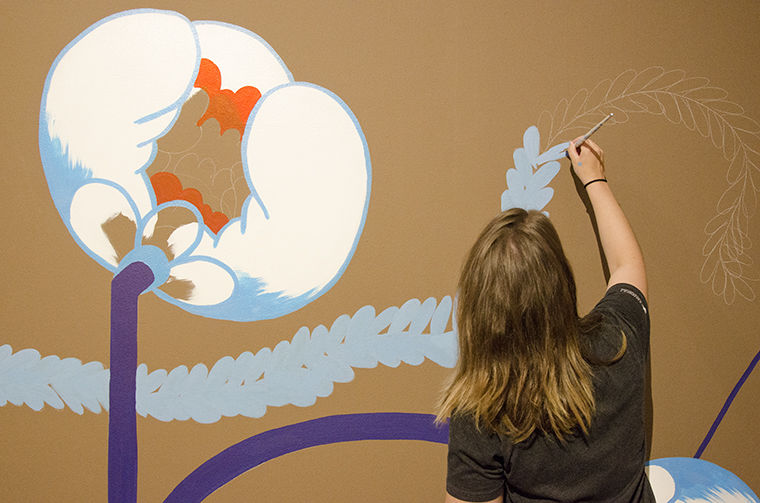‘¡Sí, Se Puede!’ opens at Glass Curtain Gallery
September 5, 2017
“¡Sí, Se Puede!” is an exhibit featuring the work of eight artists inspired by the archives of Cesar Chavez, Dolores Huerta and their work with the United Farm Workers Movement that opened Sept. 5 at the Glass Curtain Gallery and will run until Nov. 4.
The name of the exhibit comes from the slogan of the UFW, the largest farm workers union in the U.S. Huerta co-founded the union with Chavez in 1962 to improve the wages and living conditions of migrant farm workers and coined the slogan, which translates to “Yes, We Can.”
The exhibit, located at 1104 S. Wabash Ave., showcases work inspired by the UFW archives at the Walter P. Reuther Library at Wayne State University and will have an opening reception Sept. 15, according to Meg Duguid, director of exhibitions at the Department of Exhibitions, Performance and Student Spaces and curator of “¡Sí, Se Puede!”
“Columbia students are always looking for content to make work around,” Duguid said. “The artists that are selected in this show all have deep ties into various histories archived as art teaching, education and social practice. Each artist was selected specifically because they have worked in and around archives.”
The exhibit features various murals, photography, paintings and mixed media. Two of the artists have murals going up in the Wabash Arts Corridor in September, Duguid said
Artist Gloria Talamantes, a Columbia creative writing alumna, has an installation in “¡Sí, Se Puede!” that includes a newsletter from the Chicano Movement as well as a mural she painted in Little Villaga titled “Flowers for Healing,” which is being replicated in the exhibition, she said.
Growing up in Little Village, Talamantes was introduced to graffiti and used it to express her struggles of being marginalized.
“It’s hard to be a part of something that’s not shaped or made for you,” Talamantes said. “Graffiti for me was an outlet, and it is something that I am tremendously humbled by.”
Talamantes said she was inspired by the posters from the Chicano Movement and letters that children wrote to Huerta about the impact she had on them.
“‘¡Sí, Se Puede!’ means so many things to me,” said Talamantes. “‘¡Sí, Se Puede!’ means ‘yes, we can.’ I believed that I could.”
The exhibition shows the relevance and impactof the Chicano Movement and the UFW to the history of the U.S. and the importance of diversity, equity and inclusion, which is a large topic in the college’s Strategic Plan, Duguid said.
Neysa Page-Lieberman, executive director of the Department of Exhibitions, Performance and Student Spaces and chief curator of the WAC said she values connecing the college’s art gallery to the public art program.
“I’m excited and proud this is happening in our department,” Page-Lieberman said.








